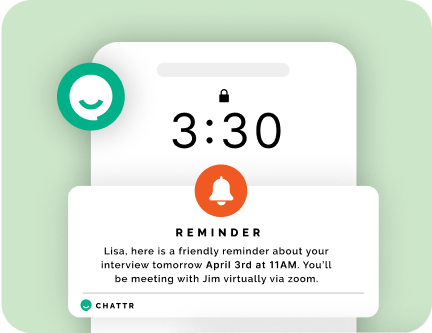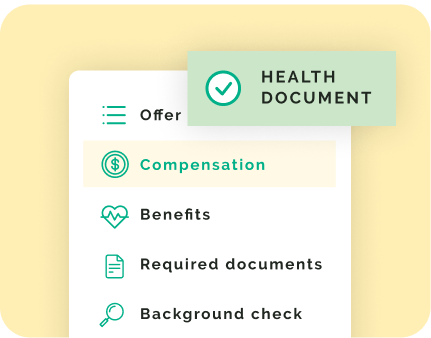In today’s digital age, businesses continually look for new and innovative ways to improve their performance. One way many companies are turning to is using PIPs – Performance Improvement Plans. PIPs can be a great way to help your workers improve their performance, but they can also have some downsides. This blog post will discuss the good, the bad, and the ugly of PIPs. We will also discuss how you can effectively utilize technology and AI tools to manage the performance of your workers.
What is a performance improvement plan (PIP)?
A performance improvement plan, also known as a PIP, is a structured process that helps employees identify areas where they need to improve their performance and develop actionable strategies for addressing those areas. PIPs are usually initiated by an employer when an employee’s performance falls below expectations.
However, employees can also request a PIP if they feel they are not meeting their potential. The goal of a PIP is to help the employee improve their performance and reach their full potential. While PIPs can be challenging, they can also incredibly benefit employees and employers. When done correctly, PIPs can help employees identify their strengths and weaknesses, set realistic goals, and improve their overall performance. For employers, PIPs can help improve communication, increase accountability, and boost morale. While PIPs are not always easy, they can benefit employees and employers when done correctly.
The good of PIPs – they can help employees improve their performance
Implementing a performance improvement plan (PIP) can be an effective way for companies to help employees address specific areas of concern. By identifying areas needing improvement and outlining concrete steps for addressing those issues, PIPs provide a framework for positive change. Additionally, PIPs can help to improve communication between employees and their managers. When a case is identified, managers can address it early on before it has a chance to become a larger problem.
Finally, PIPs can help to create a more positive work environment overall. PIPs can contribute to a continuous learning and improvement culture by encouraging employees to grow and develop in their roles. In today’s competitive business landscape, companies that can invest in their employees’ development will be well-positioned for long-term success.
The bad of PIPs – they can be used to punish employees unfairly
A performance improvement plan (PIP) is a tool that teams can use to help employees improve their job performance. It can also be used to help employers identify and address problems with employee productivity. However, PIPs can also be used to punish employees unfairly. They can create an environment of fear and mistrust when used in this way, making employees resentful and unmotivated, which can further impact their job performance. However, when used correctly, PIPs can effectively improve employee productivity and help businesses achieve their goals.
The ugly of PIPs – when they’re used as a way to get rid of employees rather than help them improve
PIPs, or performance improvement plans, can be a helpful tool for employees struggling to meet work expectations. When used correctly, PIPs can provide employees with clear goals and a roadmap for how to improve their performance.
However, PIPs can also be abused by employers as a way to get rid of unwanted employees. In these cases, PIPs are often used as a way to document an employee’s shortcomings in order to justify termination. As a result, employers must use PIPs fairly and transparently to avoid legal challenges. When done right, PIPs can be a helpful tool for both employees and employers. However, when abused, they can do more harm than good.
How to make sure your PIP is successful for both the employee and the company
A performance improvement plan is a great way to help employees and companies get back on track. By identifying the areas where an employee needs improvement and putting together a plan to address those issues, a PIP can help to improve morale and boost productivity.
However, there are a few key things to keep in mind to ensure that your PIP is successful:
- It’s crucial to involve the employee in the process from start to finish. This will help them buy into the plan and feel invested in its success.
- Make sure that the goals you set are realistic and achievable.
- Determine what resources will be available to help the employee reach those goals.
With these steps in mind, you can create a PIP that benefits both the employee and the company.
Employees – how technology can help them be more productive
Technology can help employees in several ways regarding performance improvement plans. First, it can provide employees with instant feedback on their progress. For instance, an employee working on a sales goal may be able to see how many calls she’s made, how many appointments she’s set, and how much revenue she’s generated each week. This information can help her to adjust her strategy and stay on track.
In addition, technology can also help employees to identify areas where they need improvement. For instance, an employee who is consistently late for work might be able to use a time-tracking app to see where he’s losing time each day. Ultimately, technology can help employees to be more productive and successful in meeting their performance goals.
Employers – how technology can help them manage their employees’ productivity
When it comes to managing employee productivity, technology can be a valuable asset. By tracking employee output and activity levels, employers can identify areas where employees may be struggling and in need of support.
Additionally, technology can help create more efficient workflows and systems, reducing the time employees need to spend on tasks. Technology can sometimes even automate tasks, freeing employees to focus on more strategic tasks. Ultimately, by leveraging technology, employers can better understand their employees’ work habits and make necessary adjustments to improve productivity.
The benefits of performance improvement plans for both employees and employers
Organizations invest a lot of time and money into performance improvement plans (PIPs), but what are the benefits of these plans for employees and employers? PIPs are intended to help employees improve their job performance and avoid being fired, but they can also help employers improve their business. When done correctly, PIPs can be beneficial for both parties.
For employees, PIPs offer an opportunity to improve their job performance and avoid being fired. Many times, employees are unaware of the areas in which they need improvement, and PIPs can help them identify these areas and work on improving them.
Additionally, PIPs can help employees reflect on their career goals and create a plan to achieve them. For employers, PIPs can help improve employee communication, identify training and development needs, and assess whether an employee is a good fit for the organization. Employers can gain valuable insights into the company’s operations by having open and honest conversations with employees about their performance. Additionally, employers can improve employee morale and loyalty by providing training and development opportunities. Finally, employers can save time and money in the long run by using PIPs to assess whether an employee is a good fit for the organization.
How to create a performance improvement plan for your business or organization
A performance improvement plan (PIP) is a tool that can be used to help employees address areas of improvement in their job performance. The first step in creating a PIP is identifying the areas where improvement is needed. Once these areas have been identified, the next step is to develop measurable goals that will serve as benchmarks for progress. Once the plans have been established, creating a timeline for achievement is essential. This will help to ensure that the goals are realistic and achievable. Finally, developing a system for monitoring progress and providing feedback is vital. This will help keep the employee on track and ensure that the PIP has its desired effect. By following these steps, you can create a PIP that will help your employees improve their performance and contribute to your organization’s success.
Final thoughts
Regarding performance improvement plans, technology can be a powerful ally for both employees and employers. For employees, tools like Chattr can help identify areas of improvement and offer personalized coaching to help them reach their goals. And for employers, AI-driven technologies like Chattr can provide visibility into employee performance and help identify potential problems before they become more significant issues. Ultimately, by harnessing the power of technology, employees and employers can work together to create a more productive and successful workplace. So if you’re looking to build a high-performing team, Chattr is here to help. Visit our website today to learn more about our AI-driven performance management solution.












